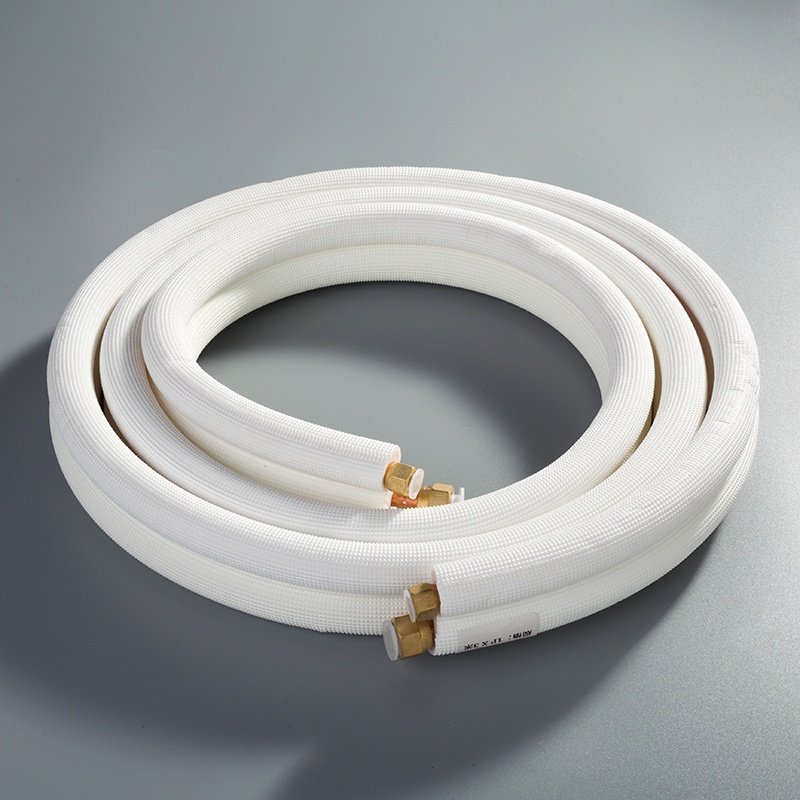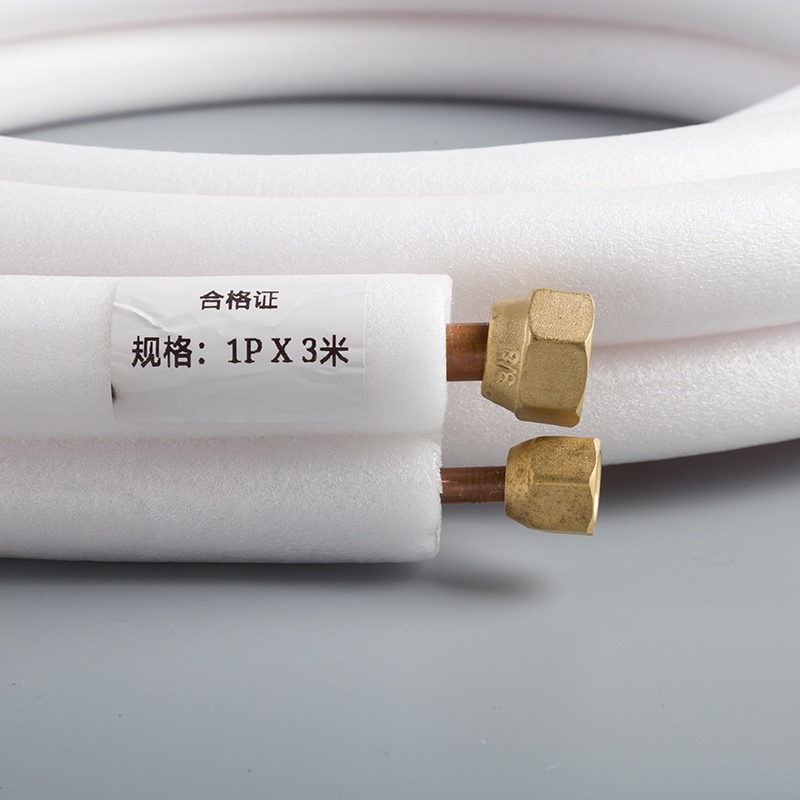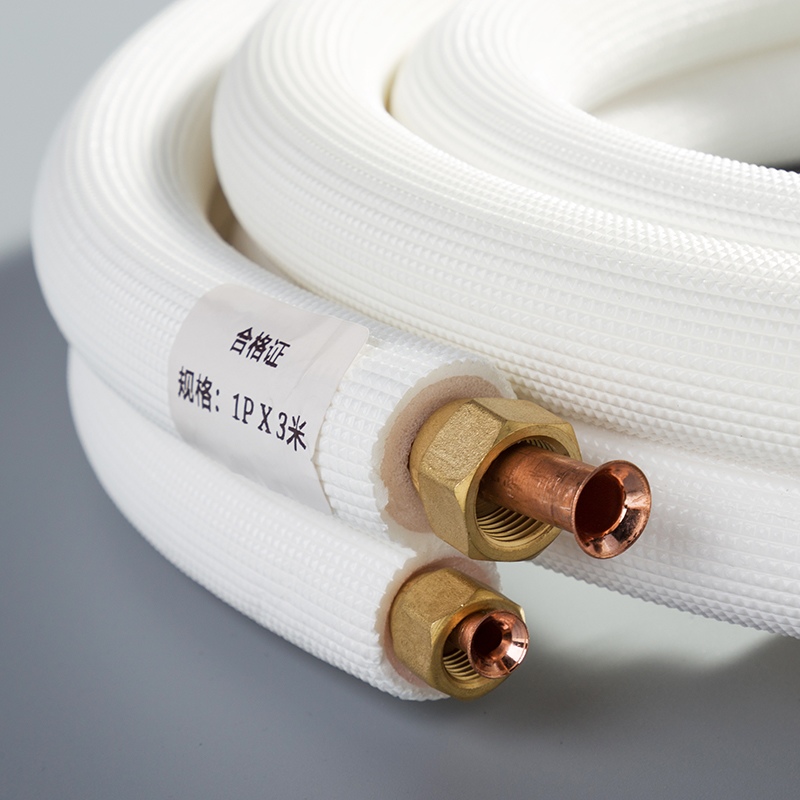How to Insulate Air Conditioner Copper Pipes Effectively

Benefits of Insulating Air Conditioner Copper Pipes
Insulating air conditioner copper pipes is crucial for enhancing energy efficiency, reducing costs, and prolonging the system's lifespan. By preventing heat dispersion and maintaining higher water temperatures than uninsulated pipes, insulating these pipelines results in significant savings on energy consumption. Additionally, it helps prevent common issues like condensation, pipe damage, and increased maintenance costs caused by uninsulated pipes. Taking proactive steps to insulate your air conditioner copper pipes can lead to substantial benefits in the long run.
Understanding the Need for Insulation
Why Insulation is Important
Energy Efficiency
Insulating air conditioner copper pipes enhances energy efficiency by reducing heat dispersion and maintaining higher water temperatures than uninsulated pipes. This results in tangible savings on energy consumption, making it a cost-effective solution for homeowners.
Preventing Condensation
Insulation plays a crucial role in preventing condensation on air conditioner copper pipes. By providing resistance to water and water vapor, insulation helps avoid moisture buildup that can lead to pipe damage over time.
Extending System Lifespan
One of the key benefits of insulating air conditioner copper pipes is the extension of the system's lifespan. By reducing heat loss and preventing sweating pipes, insulation contributes to the overall efficiency and longevity of the system.
Common Problems with Uninsulated Pipes
Energy Loss
Uninsulated air conditioner copper pipes are prone to energy loss due to heat dispersion. This inefficiency leads to increased energy consumption and higher utility bills for homeowners.
Pipe Damage
Without proper insulation, air conditioner copper pipes are susceptible to damage caused by condensation and external factors. Insulation acts as a protective barrier, safeguarding the pipes from potential harm.
Increased Maintenance Costs
Uninsulated pipes often result in increased maintenance costs due to issues like condensation, corrosion, and reduced system efficiency. Insulating the copper pipes can help minimize these maintenance expenses over time.
By understanding the importance of insulation and recognizing the common problems associated with uninsulated pipes, homeowners can make informed decisions to improve their air conditioning systems' performance and durability.
Choosing the Right Insulation Material

Types of Insulation Materials
Foam Tubing
Foam tubing is a popular choice for insulating air conditioner copper pipes due to its affordability and ease of installation.
It comes in 3/8 inch and 5/8 inch thicknesses, with the latter providing better insulation, especially in colder climates.
The foam tubing typically includes a layer of two-sided tape for convenient application.
Polyethylene
Polyethylene Pipe Insulation is a closed-cell material used to insulate hot water pipes, reducing heat loss and raising water temperature by 2°F – 4°F.
This type of insulation offers excellent resistance to water and water vapor, making it ideal for maintaining thermal efficiency.
Its flexibility and easy installation process make it a practical choice for residential and commercial applications.
Fiberglass
Foam Pipe Insulation made of fiberglass is beneficial for long runs of water supply pipes.
It comes in strips covered with foil facing, which are wrapped around the pipes like tape.
While slightly more complex than foam tubing, fiberglass insulation can be cut at angles or fitted with separate elbows and tees for turns.
Factors to Consider
Thermal Conductivity
When selecting an insulation material, consider its thermal conductivity to ensure optimal heat retention and energy efficiency.
Moisture Resistance
Opt for materials with high moisture resistance to prevent condensation buildup and potential damage to the pipes over time.
Durability
Choose durable insulation that can withstand environmental factors and provide long-term protection for the copper pipes.
Climate Suitability
Consider the climate conditions where the air conditioner copper pipes are installed to select insulation materials that offer adequate thermal performance in varying temperatures.
Step-by-Step Guide to Insulating Copper Pipes

Preparation
Gathering Necessary Tools and Materials
Acquire foam tubing with a thickness suitable for effective insulation.
Obtain a utility knife for cutting the insulation to the required length.
Secure a tape measure to accurately measure the copper pipes.
Prepare a pair of safety gloves to protect your hands during the insulation process.
Safety Precautions
Ensure that the air conditioner is turned off before starting the insulation procedure.
Verify that there are no electrical wires near the copper pipes to prevent accidents.
Be cautious when using sharp tools like the utility knife to avoid injuries.
Wear protective eyewear to shield your eyes from any debris while working on insulating the pipes.
Measuring and Cutting Insulation
Accurate Measurement Techniques
Measure each section of the copper pipes individually for precise insulation fitting.
Begin measuring from one end of the pipe towards the other end in a systematic manner.
Double-check measurements to guarantee that the foam tubing will cover the entire length adequately.
Cutting Insulation to Fit
Use a sharp utility knife to cut through the foam tubing smoothly and evenly.
Follow along the measured marks precisely to ensure accurate sizing of each piece.
Cut at a slight angle if needed for corners or bends in the copper pipes.
Installing the Insulation
Wrapping the Pipes
Start wrapping the foam tubing around each copper pipe in spiral loops for complete coverage.
Ensure that each loop overlaps by at least 1/2 inch to eliminate any gaps in insulation.
Press firmly as you wrap to secure the foam tubing snugly around the pipes.
Securing the Insulation
Use zip ties or duct tape at regular intervals along the insulated pipes to keep them in place securely.
Check periodically as you secure them to maintain consistent tightness throughout.
Avoid over-tightening, which could compress or damage the foam tubing.
Sealing Joints and Gaps
Apply additional duct tape over joints or connections between foam tubing pieces for extra reinforcement.
Inspect all areas where two pieces meet and seal any visible gaps with tape accordingly.
Ensure that there are no exposed sections of copper pipe after completing all insulation steps.
By following these step-by-step guidelines meticulously, individuals can effectively insulate their air conditioner copper pipes, enhancing energy efficiency and system performance while minimizing potential issues associated with uninsulated pipelines."
Special Considerations for Exposed Areas
Weatherization Techniques
Apply foam tubing or pipe wrap to air conditioner copper pipes in exposed areas like the garage or basement.
Ensure a tight seal around the pipes to prevent heat loss and maintain energy efficiency.
Use expanding spray foam to fill gaps and crevices for enhanced insulation against external elements.
Using Heat Sources
Incorporate electrically powered antifreeze tape along with insulation for outdoor air conditioner copper pipes.
Position reliable heat sources strategically to prevent freezing in cold climates.
Consider installing heat cables or heat lamps near exposed pipes for added protection during extreme weather conditions.
Maintenance and Inspection
Regular Inspection
Identifying Wear and Tear
Inspection of air conditioner copper pipes is essential to detect any signs of wear and tear. By closely examining the pipes for damage or deterioration, homeowners can address issues promptly and prevent potential system malfunctions.
Replacing Damaged Insulation
When damaged insulation is identified during inspection, immediate replacement is crucial. Faulty insulation can compromise the efficiency of the system and lead to energy losses. By replacing damaged insulation promptly, homeowners can maintain optimal performance and prolong the lifespan of their air conditioning system.
Seasonal Maintenance Tips
Preparing for Winter
As winter approaches, it is vital to prepare air conditioner copper pipes for cold temperatures. Applying additional insulation or heat sources to exposed pipes can prevent freezing and potential pipe bursts. Proper maintenance before winter sets in ensures that the system operates efficiently throughout the colder months.
Summer Maintenance
During summer, inspecting air conditioner copper pipes remains important to assess their condition after the winter season. Check for any residual damage from cold weather and ensure that the insulation is intact. Additionally, consider adjusting insulation levels based on seasonal temperature changes to optimize energy efficiency during warmer months.
By conducting regular inspections and following seasonal maintenance tips, homeowners can safeguard their air conditioner copper pipes against environmental factors, ensuring efficient operation year-round.
In conclusion, insulating air conditioner copper pipes is paramount for homeowners seeking to enhance energy efficiency and reduce costs. By following the detailed steps and considerations outlined in this blog, individuals can ensure optimal performance of their systems while minimizing potential issues associated with uninsulated pipelines. Taking action to insulate these pipes not only extends the system's lifespan but also contributes to significant energy savings over time. Embrace the benefits of insulation today for improved efficiency and long-term cost-effectiveness.
See Also
Enhance Air Conditioner Performance with Copper Pipe Insulation
Benefits of Selecting Copper Piping for Air Conditioners
The Importance of Pure Copper Tubing in Air Conditioning


